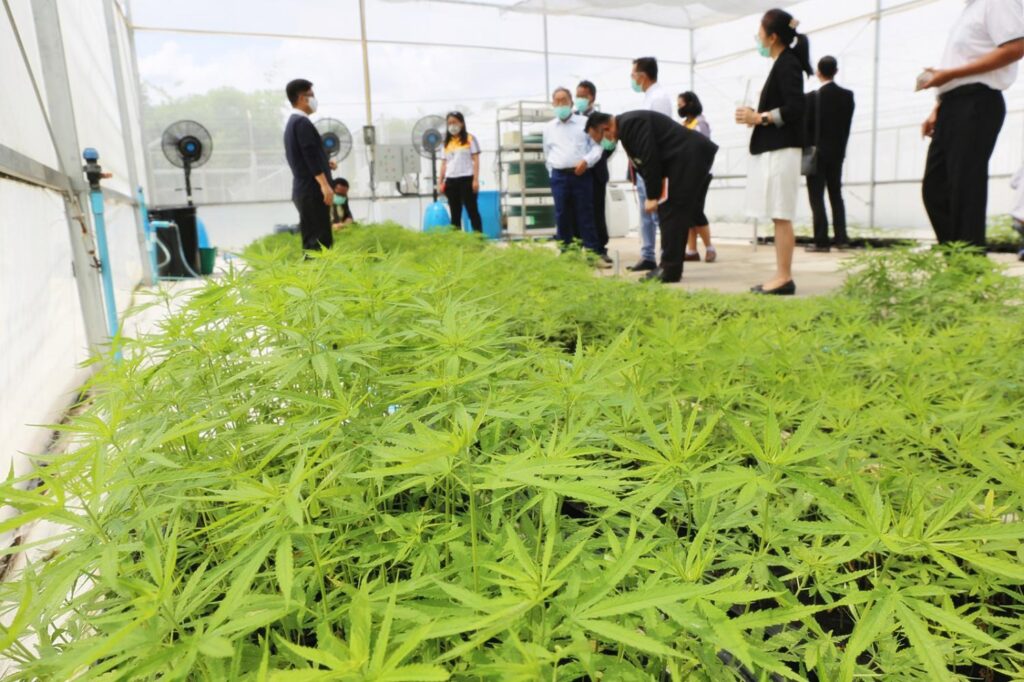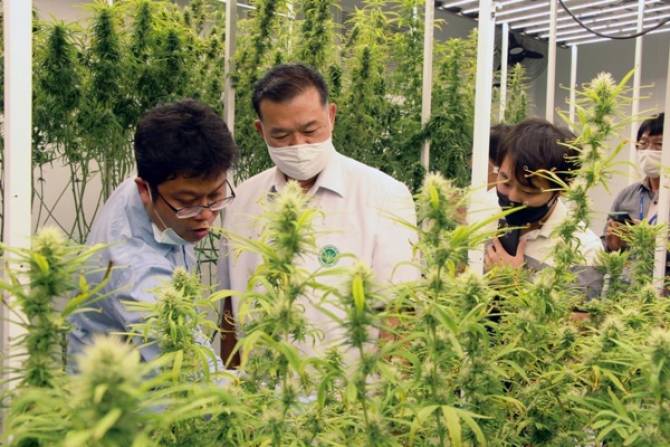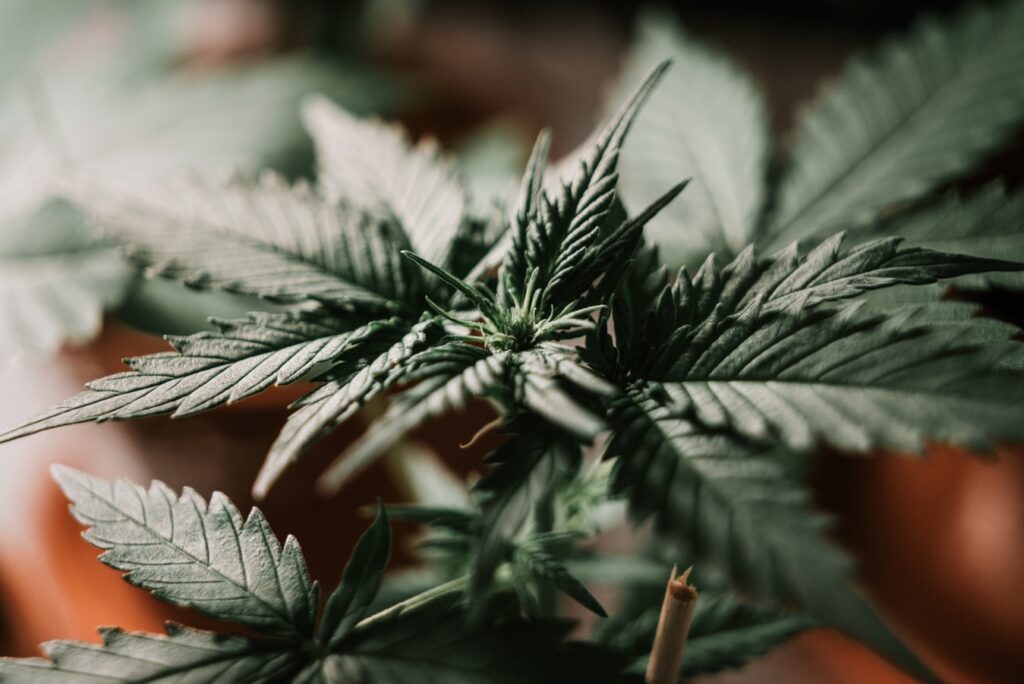
Cannabis Farm Thailand: All You Need to Know About Cannabis Farming in Thailand
Table of Contents
Background
Cannabis is commonly referred to as marijuana and is a psychoactive drug that can be used for medical or recreational purposes. In Thailand, cannabis has been cultivated for centuries and is widely available. Cannabis farming in Thailand is often done in small scale operations, with farmers growing the plant for personal use or to sell to others. Cannabis plants typically contains THC, the psychoactive compound that produces the “high” associated with marijuana use. Cannabis farming in Thailand is not regulated by the government and there are no laws that prohibit its cultivation. However, possession and consumption of cannabis is illegal in Thailand and can result in stiff penalties, including imprisonment. Despite the legal risks, many people in Thailand continue to grow and use cannabis.
Climatic and Soil Conditions
Cannabis plants require a warm, humid climate with plenty of sunlight to thrive. Thailand’s tropical climate is ideal for growing cannabis, and the plant can be found growing wild in many parts of the country. The temperature in Thailand rarely falls below 20 degrees Celsius, making it possible to grow cannabis year-round.
The rainfall requirement for cannabis is about 100-150 cm per year.
The optimum pH range for cannabis is between 6 and 7.
Cannabis plants can be grown in a variety of soil types, but loamy soils with good drainage are best. Cannabis plants have a deep taproot system and require fertile soils that are high in organic matter.
Thai farmers typically grow cannabis in small plots of land using traditional farming methods. Cannabis plants are often grown mixed with other crops, such as rice, maize, or peanuts. This type of mixed cultivation is known as “taungya” and is common in Thailand.
How to Plant Cannabis
Cannabis is a beautiful and versatile plant that has many uses. It can be planted indoors or outdoors, in soil or hydroponically, and it can even be grown in a container. Whether you are growing cannabis for personal use or for commercial purposes, there are some basic steps you need to follow to ensure a successful crop.
Spacing
For indoor growing, it is recommended to space each cannabis plant about 2 feet apart. This allows the plants room to grow and prevents them from overcrowding each other. If you are growing outdoors, you will need to space the plants depending on the size of the area you have available. The general rule of thumb is to space each plant about 6-8 inches apart.
Choosing the Right Container
If you are growing cannabis in a container, it is important to choose the right size and type of container. Cannabis plants can grow quite large, so you will need a pot that is at least 12 inches in diameter. Be sure to choose a pot with drainage holes to prevent the roots from becoming waterlogged.
You can also grow cannabis in hydroponic systems. These systems use a growing medium other than soil, such as sand, gravel, or rock wool. Hydroponic systems are often used by commercial growers because they allow for faster growth and bigger yields.
Getting the Right Light
Cannabis plants need a lot of light to grow properly. If you are growing indoors, you will need to provide your plants with artificial light. The best type of artificial light for cannabis is high-intensity discharge (HID) light, such as metal halide (MH) or high-pressure sodium (HPS). These lights emit a lot of heat, so be sure to use a fan to ventilate your grow room and prevent the plants from getting too hot.
If you are growing outdoors, your plants will need at least 6 hours of direct sunlight per day. If you live in an area with long summer days, you can supplement your plants with artificial light to give them even more light.
Watering Your Plants
Cannabis plants need to be watered regularly to stay healthy. The amount of water your plants need will depend on the type of soil you are using, the size of the pot, and the climate you are growing in. In general, cannabis plants need about 1-2 inches of water per week. Be sure to check the soil before watering to make sure it is dry. Overwatering can be just as harmful to your plants as not watering them enough.
Fertilizing Your Plants
The cannabis plant is a heavy feeder and will need to be fertilized regularly to produce a good yield. There are many different types of fertilizer available, so it is important to choose one that is specifically designed for cannabis plants. Fertilizers typically come in two forms: liquid and solid. Solid fertilizers are applied to the soil, while liquid fertilizers are mixed with water and applied to the plants.
It is important to fertilize your plants regularly, but be sure not to overdo it. Too much fertilizer can burn the roots and damage your plants. Start with a low dose of fertilizer and increase it gradually as the plants grow.

Breeding Control in Cannabis Farming
When it comes to breeding cannabis, there are a few key things that farmers need to keep in mind in order to produce the best possible crop. First and foremost, it is important to maintain a good level of control over the breeding process. This means keeping track of which plants are being used for breeding, as well as ensuring that only the healthiest and most viable plants are used in the process.
Another important aspect of breeding control is maintaining a good level of genetic diversity. This is important because it helps to ensure that the plants are able to adapt and survive in a variety of different conditions. By having a greater degree of genetic diversity, farmers can be sure that their plants will be better equipped to deal with whatever challenges they may face.
Also, it is also important to consider the end goal of the breeding process. This means thinking about what traits you want to see in the final product. By having a clear idea of what you are hoping to achieve, you can be sure that your breeding efforts are more likely to be successful.
Pollination Control
One of the most important aspects of breeding cannabis is controlling the pollination process. This means ensuring that only the desired plants are pollinated, and that unwanted pollen does not come into contact with the plants. There are a few different ways to achieve this, but one of the most common is to use physical barriers such as screens or bags.
Another method of pollination control is to use chemicals. This involves applying a chemical treatment to the plants that prevents pollen from adhering to them. This can be an effective way to prevent unwanted pollination, but it is important to use the right products and to follow the instructions carefully to avoid damaging the plants.
In some cases, it may also be necessary to hand-pollinate the plants. This is a more time-consuming process, but it allows for greater control over which plants are pollinated.
Selective Breeding
Once the pollination process has been controlled, the next step is to select the desired plants for breeding. This involves choosing plants that have the desired traits and then breeding them together. The process of selective breeding can be used to create new strains of cannabis or to improve existing ones.
It is important to select the right plants for breeding, as this will determine the final outcome of the process. This means considering factors such as the desired traits, as well as the plant’s overall health and vigor.
Once the desired plants have been selected, the next step is to bring them together for breeding. This can be done by either growing the plants together in the same space or by exchanging pollen between them.
The process of selective breeding can be time-consuming, but it is an important part of creating new and improved strains of cannabis. By carefully selecting the right plants and then breeding them together, farmers can create strains that have the desired traits and that are more likely to be successful in a variety of different conditions.
Cannabis Seed production
The final step in the breeding process is to produce seeds from the desired plants. This involves carefully harvesting the pollen from the plants and then using it to fertilize the female plants. The process of seed production can be time-consuming and labor-intensive, but it is essential for creating new strains of cannabis.
Once the seeds have been produced, they can be used to grow new plants or to breed further generations of plants. The seeds can also be sold to other farmers or cannabis growers, who can then use them to grow their own crops.
Seed production is a vital part of the breeding process, as it allows farmers to create new strains of cannabis and to improve existing ones. By carefully selecting the right plants and then producing seeds from them, farmers can create strains that have the desired traits and that are more likely to be successful in a variety of different conditions.
Fiber Production in Cannabis Production
The time it takes for a plant to mature can vary depending on the strain, but most cannabis plants will be ready to harvest within 10-12 weeks from planting. The length of time it takes for a plant to mature can be affected by a number of factors, including the amount of light and nutrients it receives, as well as the temperature and humidity levels in the grow room.
Once the plants have reached maturity, they can be harvested and the fiber can be extracted from the stems. The process of fiber extraction can be time-consuming and labor-intensive, but it is essential for creating high-quality cannabis products. There are a number of methods that can be used to extract the fiber from the plants.
- Biological Pooling Method
The biological pooling method is the most common method of fiber extraction. This involves using a solution of water and enzymes to break down the plant material and release the fibers. The process of extracting the fiber using this method can be time-consuming, but it is often the best option for creating high-quality cannabis products.
- Chemical Extraction Method
The chemical extraction method is another common method of fiber extraction. This involves using a solvent, such as ethanol, to extract the fiber from the plant material. The process of extracting the fiber using this method can be time-consuming, but it is often the best option for creating high-quality cannabis products.
iii. Mechanical Extraction Method
The mechanical extraction method is the most common method of fiber extraction. This involves using a machine to strip the fiber from the plant material. The process of extracting the fiber using this method can be time-consuming, but it is often the best option for creating high-quality cannabis products.
Once the fiber has been extracted, it can be used to create a variety of different products, including rope, fabric, paper, and insulation. The fiber can also be used to make a number of other products, such as biofuels and construction materials.

Other Cannabis Maintenance Activities
Pest Control
Cannabis plants are susceptible to a variety of different pests, including aphids, whiteflies, and spider mites. These pests can cause serious damage to the plants, and they can also transmit diseases. To control these pests, farmers need to use a variety of different methods, including chemical pesticides, biological controls, and physical barriers.
Weed Control
Weeds are a common problem in cannabis cultivation, as they can compete with the plants for resources, including water and nutrients. To control weeds, farmers need to use a variety of different methods, including chemical herbicides, mechanical cultivation, and mulching.
Irrigation
Cannabis plants need to be watered regularly to maintain healthy growth. The amount of water that a plant needs depends on a number of factors, including the type of plant, the stage of growth, and the climate. In general, cannabis plants need to be watered every day during the vegetative stage and every other day during the flowering stage.
Cannabis farm Thailand is a great way to get into the cannabis business. The country has a tropical climate that is ideal for growing cannabis. Additionally, the government is supportive of the industry and there is a growing demand for cannabis products. If you are interested in starting a cannabis farm in Thailand, follow the steps outlined in this guide. With a little bit of planning and preparation, you can be on your way to success.